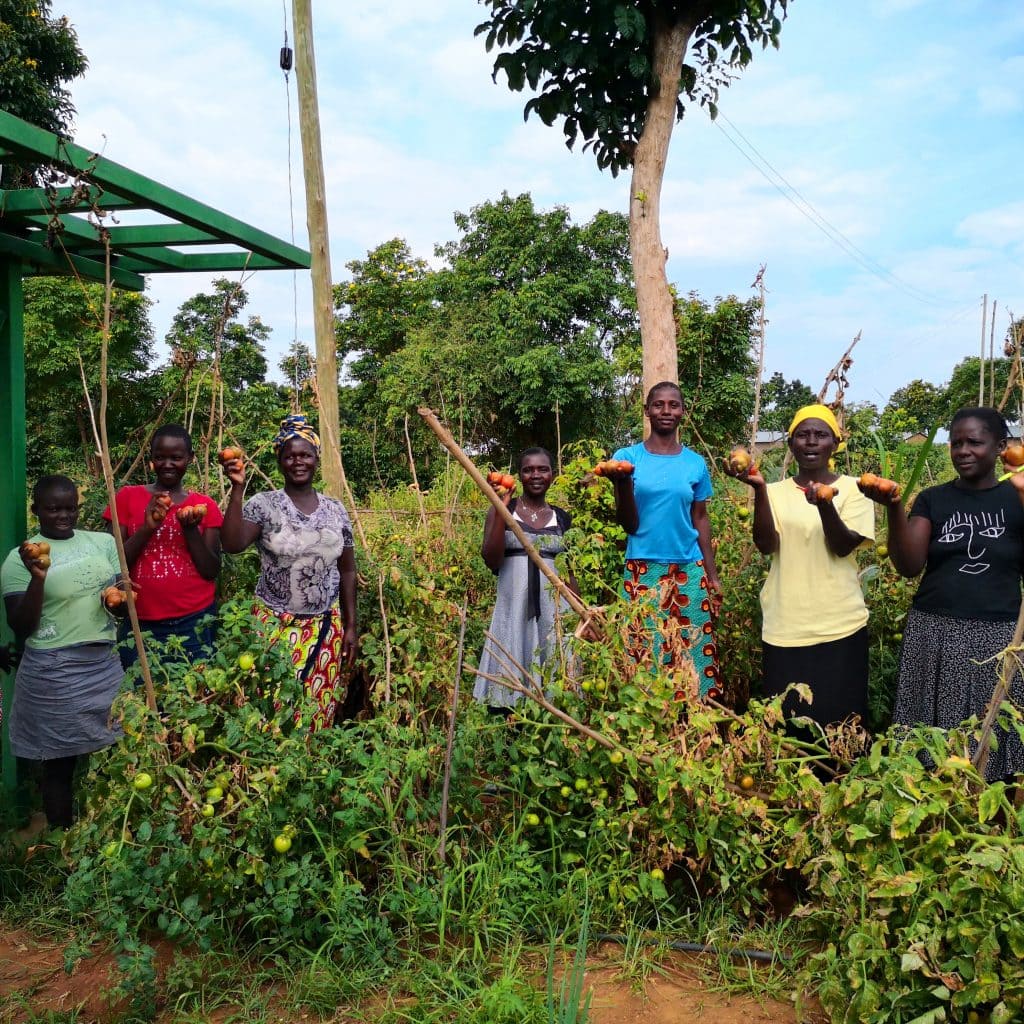A blog from Neil Pinto, our Chair of Trustees
Constructing a homemade solar-powered irrigation system
The period of isolation caused by COVID-19 has led to many people undertaking “projects” at home. As Chair of Renewable World, I thought that it would be interesting to develop a small solar-powered irrigation system to water fruit and vegetables in my greenhouse and garden. I did not want to buy an “off the shelf” solution, but as a lapsed engineer relished the challenge of designing a system for myself.
I started by putting guttering on the back of my shed, feeding rainwater in a water butt. I purchased various bits of equipment from the internet; a filter, pump, timer, PV array and electronic controller, solenoid, some small bore pipe and drip feeders, and a 12V battery. I also took the opportunity to install some strip LED lighting in my shed. The end results of my endeavours are shown in the pictures below, and I’m looking forward to a good crop without the need for daily watering.
Why a solar-powered irrigation system?
The exercise has, however, illustrated the challenges faced by many in the areas where Renewable World is active.
In Nepal, we are using solar-powered water pumps to supply villages located on mountain sides, several hours climb from rivers in the valleys. This water is used both for drinking and for irrigation of crops.

In Kenya our solar hubs are providing a reliable electricity supply to villages in and around Lake Victoria, remote from the national grid. In some of these villages water is also being pumped to supply crops, allowing them to grow in the dry season.

In both countries renewable energy is making a real difference to the quality of life of some of the poorest members of society. This is all very different from my little project, but the exercise has given me an understanding of some of the issues faced in developing projects on a much larger scale.
(Em)powering entire communities
My project works on a water store of just over 100 litres, and only operates for a few minutes every day. The biggest Renewable World solar water pumping system is powered by a 12kW solar array – some 300 times the output of my small array. It is located at Naram Gaun, Nepal, and pumps 30,000 litres per day up a vertical distance of 200m to supply 78 households and one school.
Every day this solar system in Naram Gaun saves women and girls over 62 hours of extremely arduous journeys, each of which typically involves carrying up to 20 litres of water.
Gethin Jones, our fabulous ambassador, undertook the 2.6 Challenge for Renewable World on 26th April – the day of the cancelled London Marathon – when he carried the equivalent of 15 litres of water up and down steps for a total of 2.6 km. Gethin is very fit, but even he was exhausted at the end of this! It’s difficult to think what it must be like doing it on a regular basis.
Fostering sustainability and resilience
Work does not stop after getting the projects operational, with the need for billing for energy supplied and ongoing maintenance of the equipment used. Renewable World helps the communities, who own the projects, to undertake the necessary vital tasks to keep them going for many years.
In common with many other charities, Renewable World is facing a major challenge in maintaining funding for our projects. The impact of COVID-19 is likely to be substantially worse in the developing world where it is unlikely to have the same media prominence as in the developed world. Our projects are even more important in the post-COVID world, with many people already poor facing increased economic hardship. A reliable electricity supply and a source of home-grown food can at least diminish some of these – please continue to donate to us.
Neil Pinto
Chair, Renewable World